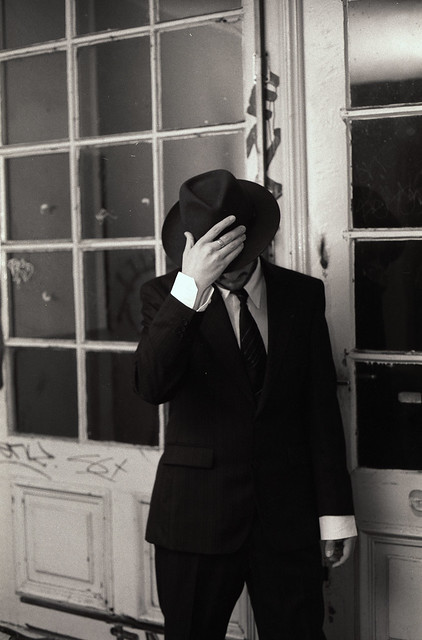PULPable is where the many points on the graph of cultural modernity bubble just beneath the surface of popular culture.
If you’re wondering exactly what I’m talking about, then you should go immediately and read A PULP Manifesto, but if your attention span is better suited to Lois & Clark than to Nietzschean “Supermen” then you should keep reading.
Though one can (and I do) trace PULPable back to the original pulp magazines and even further back to the days of Penny Dreadfuls and mass production, its origins for me were in the literary and musical choices I made as a teenager. PULPable was, to me, the pop culture subtext of a record or a novel, the assumed shared knowledge of a century

A Vogue cover referencing David Bowie's "Aladdin Sane" album
of mass-produced consumables which underpinned the song you had just listened to or the sentence you had just read.
In The Velvet Underground I found Andy Warhol, and in Warhol a critique of the very culture that had created him. In William Burroughs there were drugs galore, sentences that vomited all over the bar and which were as impenetrable as those that preceded him in Ulysses or The Wasteland. In Raymond Chandler I saw an America of surfaces and style, and in the Pulp magazines he wrote for were the beginnings of superheroes and comic book villains destined to be deconstructed within a century by Alan Moore, Neil Gaiman or Jonathan Lethem.
More vital than any other writer, singer or artist in exploring the PULPable style was David Bowie. The list above could go on for several paragraphs, but suffice it to say that the Velvets and Burroughs, as well as Anthony Burgess (and by extension Stanley Kubrick), Christopher Isherwood, Orwell and Huxley amongst others were introduced to me indirectly through obsessive listening to Bowie’s records. He was inspired by that which was considered ‘high culture’ to create that which was considered ‘low’, and in referencing writers and artists, philosophers and bands, he mirrored more closely deconstructive authors than fellow pop musicians.
This sense of an unknown pop culture grid, something that lurked beneath the superficiality of what was ostensibly popular entertainment, piqued my curiosity. Though I read and was forcibly loaned comic books (or, as some insist, Graphic Novels), watched science-fiction movies and TV shows, I also consciously selected books that felt as though they belonged on the graph of culture modernity. If I could piece together Portrait of an Artist as a Young Man with Catch-22, or place A Clockwork Orange alongside L’Etranger then maybe, just maybe, I would be able to begin to connect the points on the graph.
Books, art, music, comics, film: they all interlaced and overlapped. The pop culture surface was immediately graspable, a series of symbols which began to attain the status of modern myth by virtue of their being instantly recognisable and signifying something near-universal: the Coca-Cola logo, Superman’s costume or Warhol’s “Marilyns”. But beneath the surface, there existed a secondary stream of culture which fed on the popular,

The Escapist comic book cover, based on Michael Chabon's "Kavalier & Clay"
sometimes for entertainment (Bowie and Chandler), sometimes for art’s sake (Warhol strikes again), but more often than not for both.
There is no easy definition, for if there were then we would be immediately constrained, and why should we be forced to choose between Superman and Michael Chabon, between Bob Dylan and Dylan Thomas? PULPable is where both live together in imperfect harmony. The mainstream will swim on, and, from time to time, those bubbling under will rise to the surface and take a breath before diving for cover once again.
DLR, October 24th, 2009

